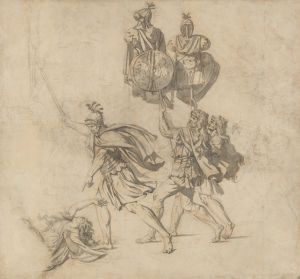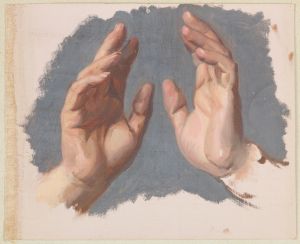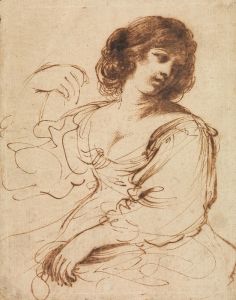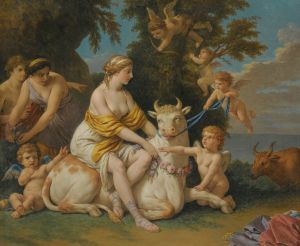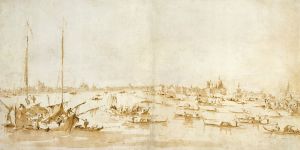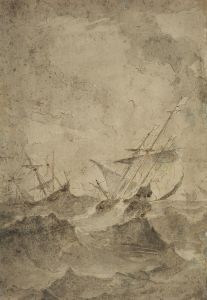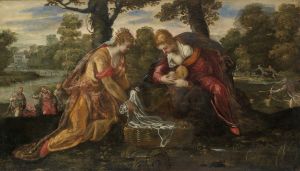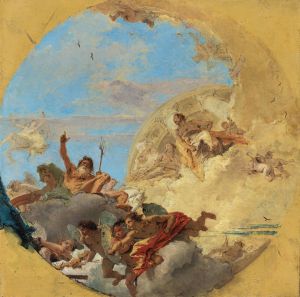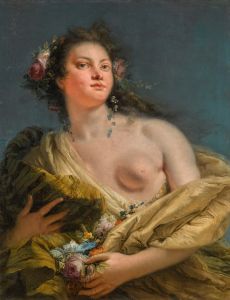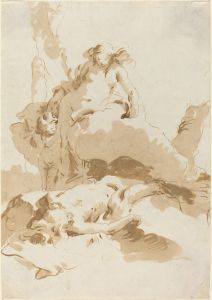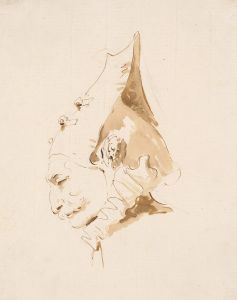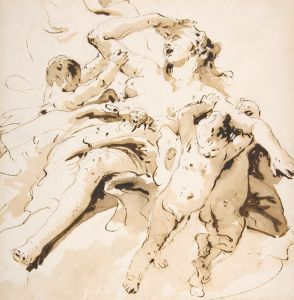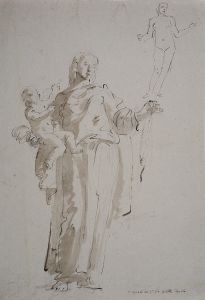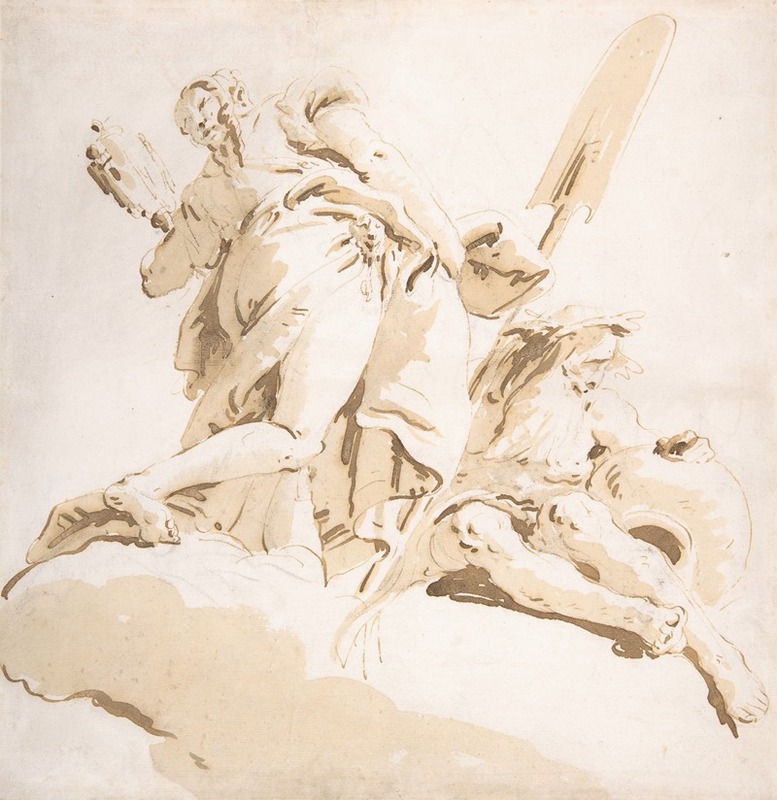
Standing Figure of Prudence and a Seated River God
A hand-painted replica of Giovanni Battista Tiepolo’s masterpiece Standing Figure of Prudence and a Seated River God, meticulously crafted by professional artists to capture the true essence of the original. Each piece is created with museum-quality canvas and rare mineral pigments, carefully painted by experienced artists with delicate brushstrokes and rich, layered colors to perfectly recreate the texture of the original artwork. Unlike machine-printed reproductions, this hand-painted version brings the painting to life, infused with the artist’s emotions and skill in every stroke. Whether for personal collection or home decoration, it instantly elevates the artistic atmosphere of any space.
Giovanni Battista Tiepolo, an Italian painter and printmaker, is renowned for his grandiose and imaginative works that epitomize the Rococo style. Among his extensive oeuvre, the painting "Standing Figure of Prudence and a Seated River God" is a notable example of his mastery in combining allegorical themes with dynamic compositions.
Tiepolo was born in Venice in 1696 and became one of the most prominent painters of the 18th century. His work is characterized by its vibrant color palette, dramatic use of light, and fluid, expressive figures. Tiepolo's art often depicted historical, mythological, and religious subjects, infused with a sense of theatricality and movement.
"Standing Figure of Prudence and a Seated River God" exemplifies Tiepolo's skill in creating allegorical representations. In this painting, Prudence is personified as a standing female figure, often depicted with attributes such as a mirror or a snake, symbolizing wisdom and foresight. The River God, typically portrayed as a muscular male figure, is seated, embodying the natural element of water. This juxtaposition of figures is a common motif in allegorical art, where human virtues and natural forces are personified to convey moral or philosophical messages.
Tiepolo's ability to convey complex allegorical themes through his art was highly regarded during his lifetime. His works were commissioned by nobility and religious institutions across Europe, and he was particularly celebrated for his frescoes, which adorned the ceilings and walls of palaces and churches. The painting in question, while not as widely discussed as some of his larger frescoes, still reflects his adeptness at integrating figures into harmonious compositions that communicate deeper meanings.
The composition of "Standing Figure of Prudence and a Seated River God" is marked by Tiepolo's signature use of light and shadow to create depth and movement. The figures are rendered with a sense of grace and fluidity, their gestures and expressions contributing to the narrative of the painting. Tiepolo's use of color is both vibrant and delicate, enhancing the overall dynamism of the scene.
While specific details about the commission or the exact date of creation for this painting are not extensively documented, it is consistent with Tiepolo's style and thematic interests during the height of his career. His works from this period often explored the interplay between human virtues and the natural world, a theme that resonated with the intellectual and cultural currents of the Enlightenment.
Tiepolo's legacy as a painter is significant, influencing subsequent generations of artists and leaving a lasting impact on the development of European art. His ability to blend allegory with artistic innovation continues to be celebrated, and his works remain a subject of study and admiration in art historical circles.
In summary, "Standing Figure of Prudence and a Seated River God" by Giovanni Battista Tiepolo is a testament to the artist's skill in creating allegorical compositions that are both visually captivating and intellectually engaging. Through his masterful use of color, light, and form, Tiepolo brings to life the timeless themes of wisdom and nature, securing his place as one of the foremost painters of the Rococo era.





